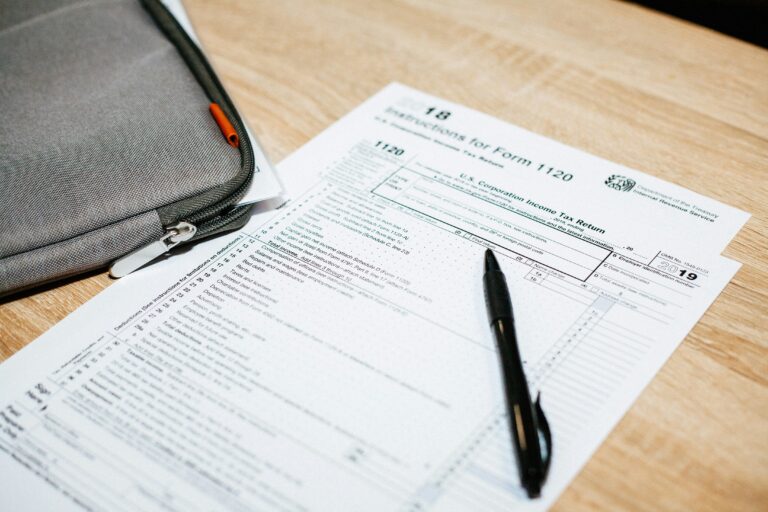
The PIT-2 form is a compilation of the employee’s statements and requests in one document for the purpose of calculating an advance income tax payment by the employer. Its main purpose is the application by the employer of a tax-reducing amount (PLN 300 per month), the application of a preferential tax rate or increased tax-deductible costs.
This document is an instruction for completing the PIT-2 form for typical employment under an employment contract, excluding special cases.
PIT-2 form
The PIT-2 form is an extensive document and includes 8 main parts:
- a statement on the deduction of the tax-reducing amountk
- a statement to the enforcement authority or to an entity that is not the successor in title of the workplace on the deduction of the tax-deductible amount
- a declaration of intention to tax income preferentially (with spouse/as a single parent)
- a statement of fulfilment of the conditions for benefiting from increased employee deductible costs
- a statement of fulfilment of the conditions for the application of tax exemptions (tax relief for return, tax relief for families of 4+, tax relief for working seniors)
- a request not to apply the young person’s tax credit or employee deductible expenses
- request to waive 50% of deductible costs
- a request for no advance payments for the tax year
In the case of standard employment, the employee submits this form in order for the employer to apply a tax-reducing amount. In addition, in certain situations, employees will request preferential income taxation (application of a reduced tax rate) due to accounting for income jointly with a spouse or as a single parent or applying increased deductible expenses.
It should be noted that in most cases after the termination of the employment relationship (termination of the employment contract), the employer ignores the statements previously made by the employee on this form when calculating the tax.
Deadline for submission
The employee (taxpayer) files the PIT-2 at any time during the calendar year. However, it is most often filed in the first month of employment, which allows the employer to apply the employee’s statements and requests in the very first salary calculation. The submitted form has effect in subsequent years, with the employee being obliged to update it in the event of a change in the facts.

Filling in the form
The employee (taxpayer) fills in only those parts of the form for which he or she is making a statement or application. The statement or application is submitted by the taxpayer by:
- tick the correct box
- in part E, item 10 concerning the declaration of the intention to tax income preferentially (with a spouse or as a single parent), additionally by deleting the wrong content
- signature of Part K.
The PIT-2 form is an elaborate document and deals with various taxation options to be considered in the context of the individual situation of the individual (employee).
However, it should be pointed out that, in the case of employment under an employment contract, in addition to the compulsory Parts A and B and the signature in Part K, Part C will most often be filled in, possibly in addition to Part E.
The way the PIT-2 form should then be completed is as follows:
|
Part PIT-2 |
Employee (standard* employment contract) |
Employee (standard* employment contract), joint tax return |
|---|---|---|
|
Part C |
Mark square 1/12 of the tax-reducing amount (PLN 300) in item 6 |
Mark square 1/12 of the tax-reducing amount (PLN 300) in item 6 |
|
Part D |
Not applicable (leave blank) |
Not applicable (leave blank) |
|
Part E |
Not applicable (leave blank) |
Mark the appropriate square in item 10 and delete item 1) or 2) |
|
Part F |
Not applicable (leave blank) |
Not applicable (leave blank) |
|
Part G |
Not applicable (leave blank) |
Not applicable (leave blank) |
|
Part H |
Not applicable (leaveblank) |
Not applicable (leave blank) |
|
Part I |
Not applicable (leave blank) |
Not applicable (leave blank) |
|
Part J |
Not applicable (leave blank) |
Not applicable (leave blank) |
(*) Employment contract with standard deductible costs and the employee’s place of residence is in the same locality as the workplace.
Elements of the form
The following is a detailed overview of the PIT-2 form with an indication of the relevant tax provisions.
Part A
Taxpayer identification data (surname, first name, date of birth). Previously, the employee must provide his/her TIN or PESEL number in item 1.
Part B
Details of the payer to whom the statement/application is made (full name of employer).
Part C
Statement by the taxpayer to the payer on the deduction of the tax reducing amount
An employee with a single employer on a contract of employment should mark square 1/12 of the tax-reducing amount (PLN 300)
The tax-reducing amount is part of the tax scale. The scale is made up of two tax rates, two brackets, one threshold and the aforementioned tax-reducing amount. From 1 July 2022, a tax scale with rates of 12% and 32% apply.
A tax rate of 12% applies to the first bracket of the tax scale not exceeding PLN 120,000. According to the 32% rate, tax is calculated in the second bracket starting from PLN 120,001.
The income threshold is PLN 120,000, while the amount reducing the tax is PLN 3,600.
|
Tax assessment basis in PLN |
The tax is |
|
|
over |
to |
|
|
|
120,000 |
12% minus the tax-reducing amount of PLN 3,600 |
|
120,000 |
|
PLN 10,800 + 32% of the excess over PLN 120,000 |
The tax-reducing amount generates a tax-free amount, i.e. the maximum amount of the tax assessment basis up to which the tax is PLN 0. The amount not giving rise to the payment of tax calculated according to the scale is commonly referred to as the “free amount”.
From 1 January 2022, the annual free amount is PLN 30,000, which, at a rate of 12%, results from the following operation: PLN 3,600 ÷ 12% = PLN 30,000. The free amount of PLN 30,000 and the tax-reducing amount of PLN 3,600 apply to full-year income (earned since the beginning of the tax year). Monthly income – on which income tax remitters (employers) calculate PIT advances – is subject to 1/12 of the tax-reducing amount, i.e. PLN 300 (PLN 3,600 ÷ 12 months). Its equivalent is a monthly free amount of PLN 2,500 (PLN 300 ÷ 12%, respectively PLN 30,000 ÷ 12 months).
This means that, on a monthly basis, a taxpayer will not pay tax on income constituting the tax base in an amount not exceeding PLN 2,500, provided that the advance tax payment on such income is reduced by PLN 300 by the tax remitter (PLN 2,500 x 12% – PLN 300 = PLN 0).
In the case of standard employment, the employer shall reduce the advance payment by the amount of PLN 300 “at the request” of the employee, i.e. only when the employee (taxpayer) submits a statement to the employer on the application of this reduction.
By default, employers reduce the advance payment by PLN 300, but the regulations allow reducing the advance payment by PLN 150 or PLN 100. The amount of PLN 150 corresponds to 1/24 of the tax-reducing amount, and the amount of PLN 100 corresponds to 1/36 of the tax-reducing amount.
The solution consisting in dividing the amount of PLN 300 into parts is addressed in particular to persons who simultaneously receive income from more than one employer (payer), but from none of them do they receive income for which the tax base exceeds PLN 2,500 per month. Thanks to the division of the deduction amount, such persons may benefit to a greater extent from the free amount during the year.
At any time, the taxpayer may resign from the application of the PLN 300/150/100 reduction in the advance payment. It is sufficient that the taxpayer submits to the taxpayer a statement on resignation from application of this reduction or withdraws the previously submitted statement.
Part D
Declaration by the taxpayer to the tax remitter on the deduction of the tax reducing amount
This section deals with specific situations (payments by agricultural cooperatives, enforcement agency) and is not filled in for standard employment contract.
Part E
Declaration by the taxpayer to the payer of his/her intention to tax his/her income preferentially (with his/her spouse/as a single parent)
This part requires the employee to analyse and decide on an individual basis. It is important to note that the employee’s failure to apply for preferential taxation does not deprive the employee of the possibility of applying it in the annual return
The advance tax payments collected by the employer are:
- for months in which the taxpayer’s income earned from the beginning of the year from a given payer did not exceed PLN 120,000 – 12% of the income earned in a given month
- for the month in which the taxpayer’s income obtained from the beginning of the year from a given payer exceeded the amount of PLN 120,000 – 12% on that part of the income obtained in that month which did not exceed that amount, and 32% on the excess over the amount of PLN 120,000
- for the months following the month in which the taxpayer’s income earned from the beginning of the year from a given payer exceeded PLN 120,000 – 32% of the income earned in a given month from a given payer.
If the employee submits a declaration to the employer of his/her intention to preferentially tax his/her income with his/her spouse or as a single parent and indicates that his/her projected annual income:
- do not exceed the amount of PLN 120,000, and the spouse or child do not receive any income which is combined with the income of the taxpayer – the remitter will collect advances for all months of the tax year in the amount of 12% of the income obtained in a given month and additionally reduce them for each month by the amount of PLN 300
- exceed the amount of PLN 120,000, and the income of a spouse or child, which is combined with the income of the taxpayer, does not exceed PLN 120,000 – the remitter will collect advances for all months of the tax year at the rate of 12% of the income obtained in a given month from that remitter.
Part F
Taxpayer’s declaration to the company on the use of increased employee deductible costs
In most cases, this part will not be filled in by the employee
Under the general regulations, employees are entitled to a monthly deductible of:
- basic (PLN 250 per month)
- increased (PLN 300 per month) in the case of expatriate employees, or
- documented by a nominative season ticket.
At the stage of collecting advance payments, the employer applies costs “by law” in the amount of PLN 250 or “at the request” of the employee in the amount of PLN 300. Deductible costs (PLN 250, PLN 300 respectively) reduce taxable income. In certain situations, employees and persons obtaining income from property rights are entitled to deductible costs determined according to the 50% standard.
Part G
Statement of the taxpayer to the payer on the exemptions referred to in the provisions of art. 21 ust. 1 pkt 152-154 u.p.d.o.f.
In most cases, this part will not be filled in. It requires the employee to analyse his or her facts and make an individual decision
The tax relief for return, tax relief for 4+ families and the tax relief for working seniors are exemptions from taxation on PIT income referred to in Article 21(1)(152-154) of the PIT Act. Pursuant to these provisions, tax-free, under the terms of the PIT Act, is the income of a taxpayer up to an amount not exceeding PLN 85,528 in a tax year, earned from:
- working full-time
- activities carried out personally on the basis of contracts of mandate concluded with a company
- non-agricultural economic activities
- maternity allowance.
The taxpayer shall calculate the advance payment taking into account the relief (or reliefs) indicated, if the taxpayer submits to that taxpayer a statement that the taxpayer satisfies the conditions for the application of the relief (or reliefs), and in the statement concerning the return relief, the taxpayer shall also indicate the year of commencement and termination of the application of the relief by the taxpayer.
An employee (taxpayer) who has not submitted a declaration to the payer on the application of the said relief does not lose the right to it. He or she may apply it in his or her annual return, in accordance with the rules set out in the PIT Act.
Part H
Taxpayer’s request to payer not to apply youth or employee deductible allowance
In most cases, this part will not be filled in. It requires the employee to analyse his or her facts and make an individual decision
By submitting an application, the employee (taxpayer) requests the calculation of advance payments of income tax without applying the:
- relief for young people
- employee deductible costs.
Part I
Taxpayer’s request to payer to waive 50% deductible costs
In most cases, this part will not be filled in. It requires the employee to analyse his or her facts and make an individual decision
When calculating advance payments, employers and payers in respect of income from property rights may apply deductible costs of 50%.
Costs at this rate are entitled to:
- for payment to the designer for the transfer of ownership of an invention, a topography of an integrated circuit, a utility model, an industrial design, a trade mark or an ornamental design
- from a licence fee for the transfer of the right to use an invention, a topography of an integrated circuit, a utility model, an industrial design, a trade mark or an ornamental design, received during
- due to the use by authors of copyrights and performers of related rights, within the meaning of separate regulations, or disposal of such rights by them. Those costs are calculated from the revenue less the contributions for pension and disability pensions and sickness insurance deducted by the payer in a given month, the basis of assessment of which is that revenue.
In a tax year, the total tax-deductible costs of these titles may not exceed the amount of PLN 120,000.
In the case of the application of the youth relief, the return relief, the relief for families 4+ or the relief for working seniors with respect to income from employment, the sum of the total deductible expenses determined according to the 50% standard and the aforementioned income from employment (covered by the reliefs), may not exceed the amount of PLN 120,000 in the tax year.
The abandonment of the application of these costs during the year does not deprive the taxpayer of the right to use them in the annual return (subject to a limit) if the conditions set out for this preference are met.
Part J
Taxpayer’s request to taxpayer not to take advance payments for the tax year
In most cases this part will not be filled in
A taxpayer who anticipates that his or her annual income on the scale will not exceed the tax-free amount, i.e. PLN 30,000, may submit a request to the payer not to collect advance payments in a given tax year.
Part K
Date of completion and signature of the taxpayer.
Annual settlement
The final settlement of income tax by the employee takes place in the annual tax return PIT-36 or PIT-37 filed by the employee. Consequently, the advance payments collected by the employer or paid by the employee himself to the tax office during the year are only advances for the annual settlement. The tax resulting from PIT-36 or PIT-37 is the tax due on the taxpayer’s income earned in the tax year. If the tax due is higher than the advance payments made during the year, an underpayment of tax arises, which the taxpayer pays in the annual return. The underpayment of tax shall be paid by the employee (taxpayer) himself to the individual tax account by the deadline set for the submission of the tax return.

Our support
Meeting an employer’s obligations in the payroll and HR function requires consideration of many elements, including the use of a modern payroll system. Check out our payroll and HR services we provide for our clients. We are here to make your business easier.
We provide payroll and HR outsourcing services.






